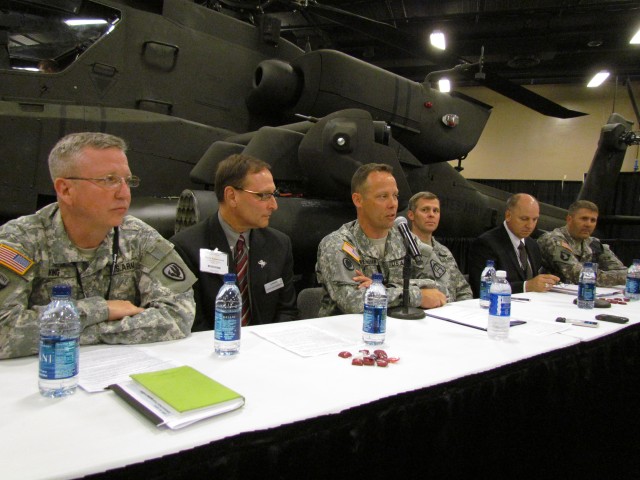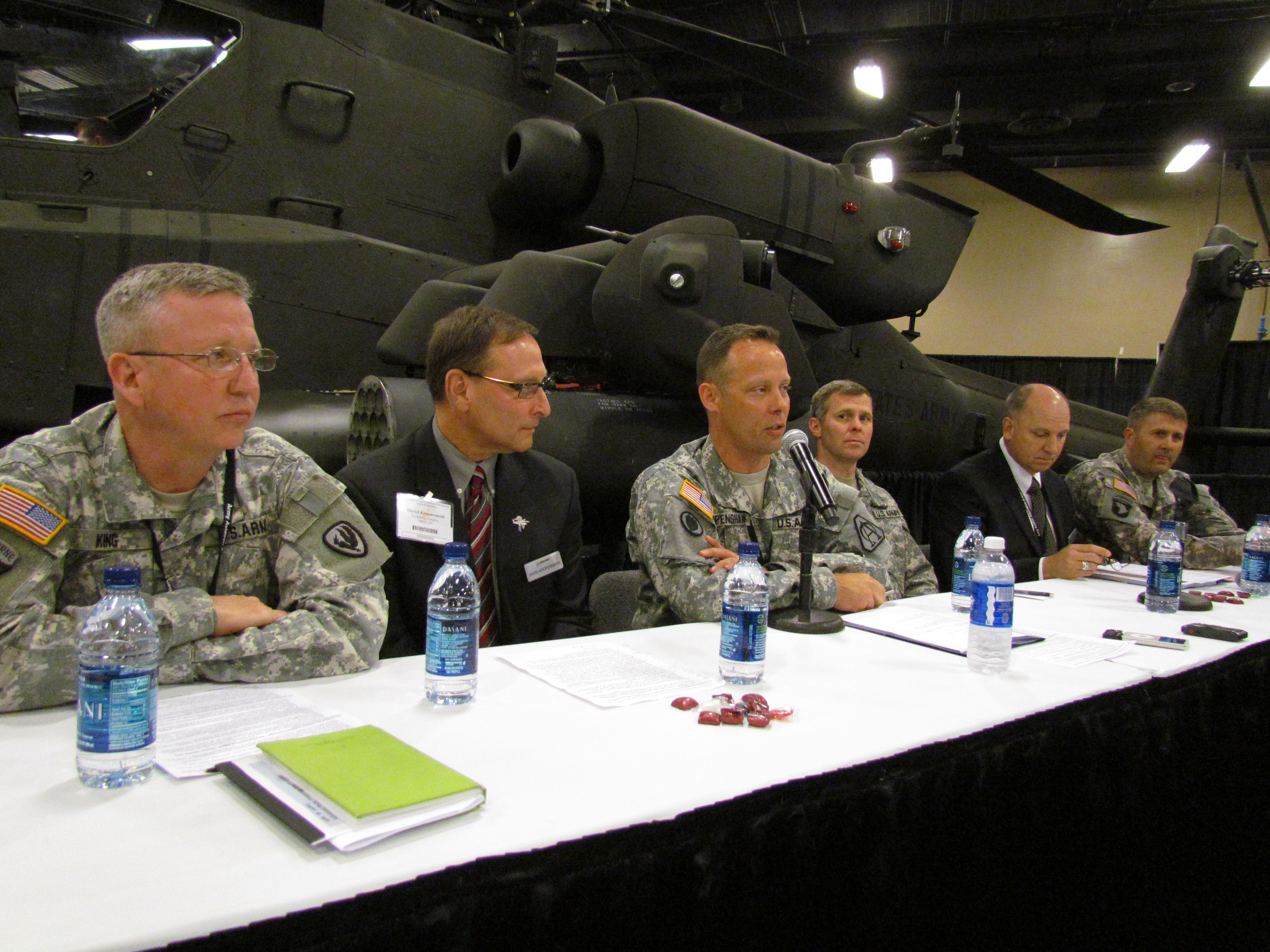
REDSTONE ARSENAL, Ala.--Among the large-scale exhibits, the government employees providing information on innovative programs and the company executives showcasing aviation capabilities, time and time again it was the voice of the Soldier that stood out at the Army Aviation Association of America annual Professional Forum and Exposition.
And that was no exception at the Apache media roundtable April 18 at the Apache Attack Helicopter Project Office exhibit in the Program Executive Office for Aviation area of the forum's exposition area.
In addition to reports on product accomplishments and future manufacturing plans from Apache project manager Col. Shane Openshaw and his staff, and recommitment pledges from Boeing executives, the comments from Apache combat pilot Lt. Col. Hank Taylor gave a picture of how the Apache is a game changer on the battlefield.
"He and his formation and those like him who are deployed around the world every day are the only reason we are here," Openshaw said of Taylor. "These pilots make us relevant and, more doubly, they make us proud of what we do."
Taylor returned about a month ago from Kandahar, Afghanistan, where he was deployed as a squadron commander of Task Force Saber, 101st Aviation Brigade, which has a mix of helicopters to include Apache.
"We would send out daily a large number of Apaches that flew in support of ground forces," Taylor said. "We were determined each day to get out there and support our ground forces, and to keep ourselves in the minds of the enemy."
On a bad day, when visibility was a half mile or three-fourths of a mile, Taylor said Apache still had a presence on the battlefield.
"You couldn't see us, but you could hear us," the pilot said. "The battalion commander called us to thank us for being there on a marginal day. When the enemy heard us, they would report back to their leaders not to do anything because they could hear the big birds coming. The noise we made was enough to stall and keep the enemy from attacking our friendly force and Afghan forces."
Commanders often describe Apaches and their pilots as "game changers," Taylor said.
"We fired on the enemy with a 30 millimeter Hellfire (missile). As a pilot, I have confidence I was going to make a difference with the Apache," he said.
But, even if the Apaches weren't in a battle, simply their presence gave a "show of force" that often held the enemy at bay, Taylor said.
Not only is the Apache effective in Afghanistan, it is also available. The helicopter has an 80 percent or greater readiness rate in theater.
"It never let us down and, more importantly, it didn't let the ground forces down," Taylor said.
Apaches have flown 800,000 combat hours.
"This aircraft is successful in the field. It is the world's best attack aircraft ever," Openshaw said.
The current Apache version - Apache Block II - remains in production. The Boeing production line delivered 15 new Block II Apaches in 2010 and 12 new Apaches are set for delivery in 2011. By the end of 2011, Boeing will have delivered 158 of 213 Block II Apaches. Block II manufacturing will be complete in 2013.
Block III Apaches have started production, with the first one set to come off the production line in October.
Block III Apaches will have a new fuselage, new technology including a ground fire acquisition system that uses a flash detector to determine the source of enemy fire, composite blades that will increase cruise and combat speed, and increased command and control capabilities with unmanned aircraft.
"With Block III, the evolution continues," Openshaw said, adding the new Apache model will be stronger, faster, more capable and better able to withstand high temperatures.
"We have to keep Apaches in the hands of the world's most capable attack pilots," the project manager continued. "It continues to be the most important asset in the war fighting arsenal for those deployed. For the Soldier on the ground, Apache continues to make a difference."
In addition, more than 620 Apaches have been remanufactured under the Apache program. In 2010, Openshaw said 37 Apaches were remanufactured and 2011 plans call for remanufacturing 25 Apaches, 15 of which have already been delivered. In addition, 40 Apache A models will upgrade to Block II in 2011.
"Success builds success," Boeing's Mike Burke said. "Block III will be the most popular yet. It has garnered a lot of international interest ... We are working hard to continue to be relevant to support the war fighter ... The Apache strikes fear in the hearts of our enemies while at the same time emboldering courage in the hearts of our Soldiers."

Social Sharing